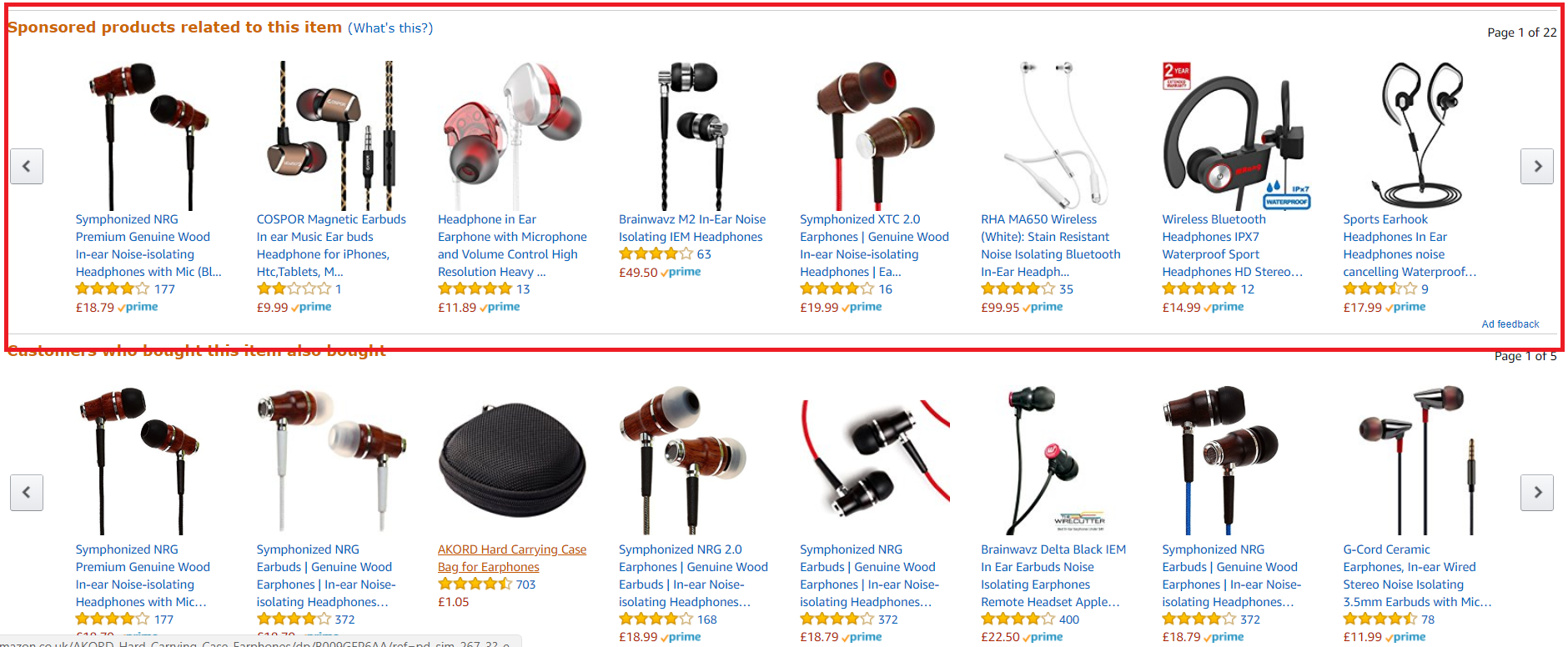Amazon Ads Is Growing and Taking on Google and Facebook
There isn’t a single industry that Amazon is scared of entering.
They have the world’s biggest e-commerce website, they are pioneers in audio and digital books and food delivery, and they are now entering the advertising space.
In this article I’ll talk about Amazon Ads and what it means for marketers.
How Amazon Ads work
Amazon Ads work in a very similar way to Google search in that you see them on their search engine.
Amazon Ads in the Amazon search appear after the user enters keywords to find a product.
![]()
Advertisers can buy space at the top of their search engine results page by bidding on keywords.
Ads on Amazon are also shown on product pages on the right-hand side:

And again, underneath in the related products section:

You’re charged each time a user clicks on your ad (pay per click). Amazon doesn’t offer many advanced bidding options like Facebook or Google… just yet.
Amazon Ads are split into two segments:
Self-service ads – These ads are shown based on the keywords you have selected to target and are typically shown on the search results page.
Premium ads – These ads are display ads such as banners and square images. Premium ads will also show up on third-party websites similar to how the Facebook Audience Network or Google Display Network work.
Amazon is the #1 search engine for retail
It’s estimated that around 80 million shoppers in the U.S. are Amazon Prime members, and 56% of U.S., UK, German, and French consumers use Amazon as their starting point when researching tangible products.
Amazon trumps Facebook and eBay when it comes to shoppers looking for ideas on what to buy.

We’ve all searched for a product on Amazon before to learn more about the product or to read reviews from others. Amazon has the added benefit over Google that you can also buy the product you’re looking for within a few clicks, and because it’s listed on Amazon, shoppers worry less about being scammed or duped.
22% of shoppers won’t look anywhere else if they see a product they like on Amazon, and over half said even if they see a product they like at a retailer, they will still price-check again with Amazon and gain more information before making their decision.
How does Amazon Ads impact e-commerce marketing?
From a business owner’s point of view, there are many advantages of using Amazon Ads.
Shoppers who use Amazon search most likely have an account and payment settings already uploaded, and Prime members will get free delivery and other benefits. These are all features that reduce the barrier to purchasing.
For these reasons, I believe Amazon’s audience is much stronger than Facebook’s and Google’s, as you only visit Amazon because you’re interested in buying something.
The downside to advertising on Amazon is that you must sell your products through Amazon. If you’re a small brand and become really big on Amazon, it may be hard for you to scale. You’ll have to play by Amazon’s rules, so if they decide to change their platform in the future by asking to take a percentage of each sale you make (which is a possibility in the future), what are you going to do?
I believe that Amazon Ads will be a useful addition to all e-commerce brands, but one shouldn’t become too heavily reliant on the platform alone.
Are you going to use Amazon Ads?
It’s going to be interesting to see where Amazon goes with their ad service in the next few years. They are an innovative brand and certainly have the capability to take on Google and Facebook in the ad space.
Personally, I’m excited to be able to serve ads to consumers who trust Amazon 100% and have all their payment information already set up. What I’m not so excited about is the fact you cannot send visitors to your own website to pixel them.
At this moment in time, you cannot add the Facebook pixel to any of your pages to retarget them on other platforms.
What do you think about Amazon Ads?